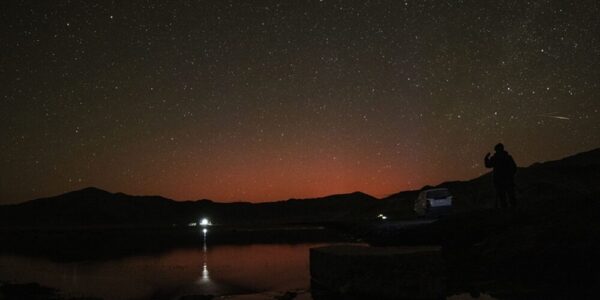Intense Solar Storms Illuminate Ladakh Skies with Stunning Aurora Display
Kargil, May 13: On the night of May 10-11, the Indian Astronomical Observatory in Hanle and Merak, Ladakh, captured a mesmerizing showcase of intense auroral activity, sparked by potent geomagnetic storms from the Sun impacting the Earth.
These storms originate from Coronal Mass Ejections (CMEs), massive discharges of plasma and magnetic fields ejected from the Sun’s corona. They can take hours or even days to reach our planet. The current robust aurora was anticipated and observed worldwide.
HOW AURORAS FORM
* Click to Follow Voice of Ladakh on WhatsApp *
Auroras, luminous ribbons in the sky, manifest when the Earth’s magnetic field is disrupted by the incoming solar wind, carrying charged particles and magnetic fields. Their intensity heightens during potent ‘geo-effective’ solar storms. Typically visible from higher latitudes, auroras become observable from lower latitudes when solar storms are exceptionally vigorous.
Scientists report that the recent sequence of storms was so potent that their effects were visible from Ladakh, India. Between May 10 and 11, at least four such solar storms reached Earth, resulting in extraordinary auroral displays globally.
The images were captured by observatories at Hanle and Merak, equipped with all-sky cameras that continuously image the entire sky. These observatories are operated by the Indian Institute of Astrophysics (IIA), Bengaluru.
“The red auroral light was captured by our Hanle camera toward the northern horizon from midnight until morning twilight, peaking around 2 AM,” stated Dorje Angchuk, Engineer-in-Charge of the Hanle Observatory.
A similar camera at Merak, situated on the banks of Pangong Tso and the proposed site of the National Large Solar Telescope, also recorded the aurora. In addition to the intense red hues caused by energetic particles in the upper atmosphere, blue and violet bands were also observed, originating from particles extending deeper into our atmosphere.
“Astronomers at IIA study the Sun, coronal mass ejections, and space weather. Auroras at Hanle latitudes are rare occurrences – we eagerly anticipate observing many more from Ladakh during this solar cycle,” remarked Professor Annapurni Subramaniam, Director of IIA.



0 Comments